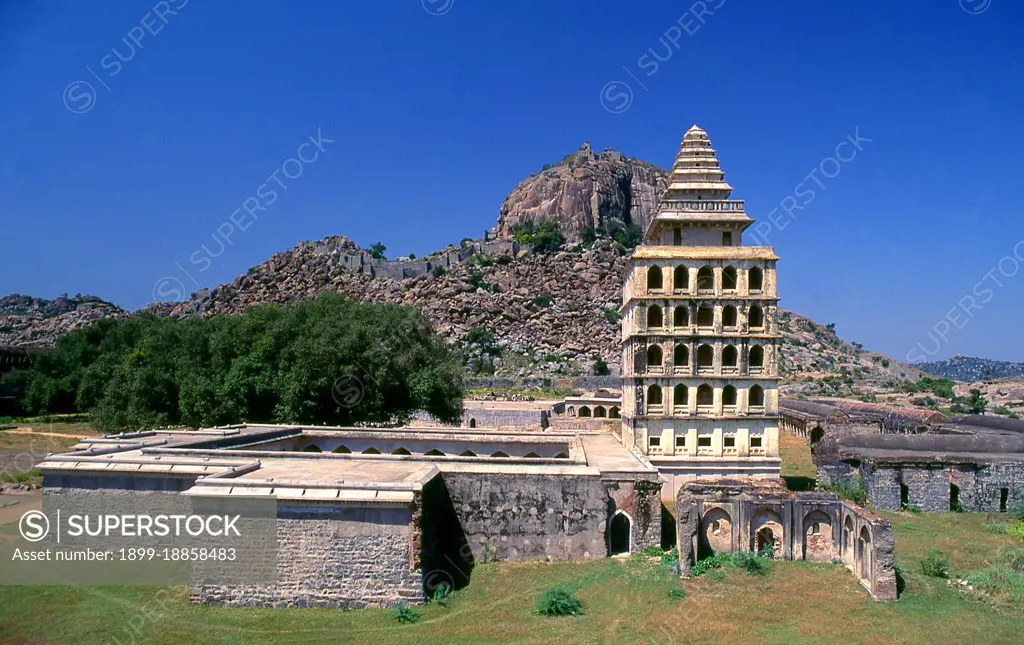Gingee Fort or Senji Fort (also known as Chenji, Jinji or Senchi) in Tamil Nadu, was originally the site of a small fort built by the Chola dynasty during the 9th century CE. The fort was modified by Kurumbar during the 13th century. The fort as it stands today was built in the 15 and 16th centuries by the Nayak Dynasty. The fort passed variously to the Marathas under the leadership of Shivaji in 1677 CE, the Bijapur sultans, the Moghuls, Carnatic Nawabs, the French and then the British in 1761. The fort is closely associated with Raja Tej Singh, who unsuccessfully revolted against the Nawab of Arcot and eventually lost his life in a battle. The fort is so fortified, that Shivaji, the Maratha king, ranked it as the 'most impregnable fortress in India' and it was called the 'Troy of the East' by the British.
SuperStock offers millions of photos, videos, and stock assets to creatives around the world. This image of Gingee Fort or Senji Fort (also known as Chenji, Jinji or Senchi) in Tamil Nadu, was originally the site of a small fort built by the Chola dynasty during the 9th century CE. The fort was modified by Kurumbar during the 13th century. The fort as it stands today was built in the 15 and 16th centuries by the Nayak Dynasty. The fort passed variously to the Marathas under the leadership of Shivaji in 1677 CE, the Bijapur sultans, the Moghuls, Carnatic Nawabs, the French and then the British in 1761. The fort is closely associated with Raja Tej Singh, who unsuccessfully revolted against the Nawab of Arcot and eventually lost his life in a battle. The fort is so fortified, that Shivaji, the Maratha king, ranked it as the 'most impregnable fortress in India' and it was called the 'Troy of the East' by the British. by Pictures From History/Universal Images is available for licensing today.
DETAILS
Image Number: 1899-18858483Rights ManagedCredit Line:Pictures From History/Universal Images/SuperStockCollection:
